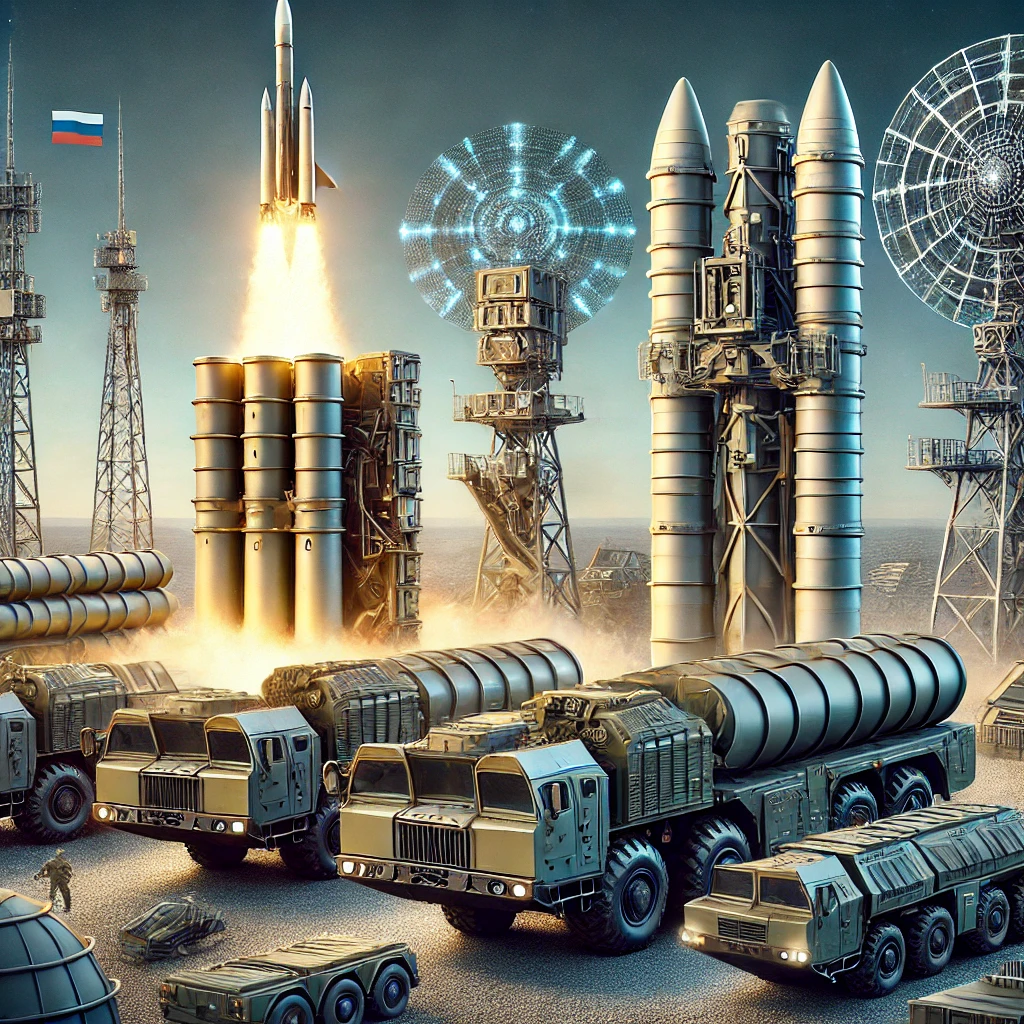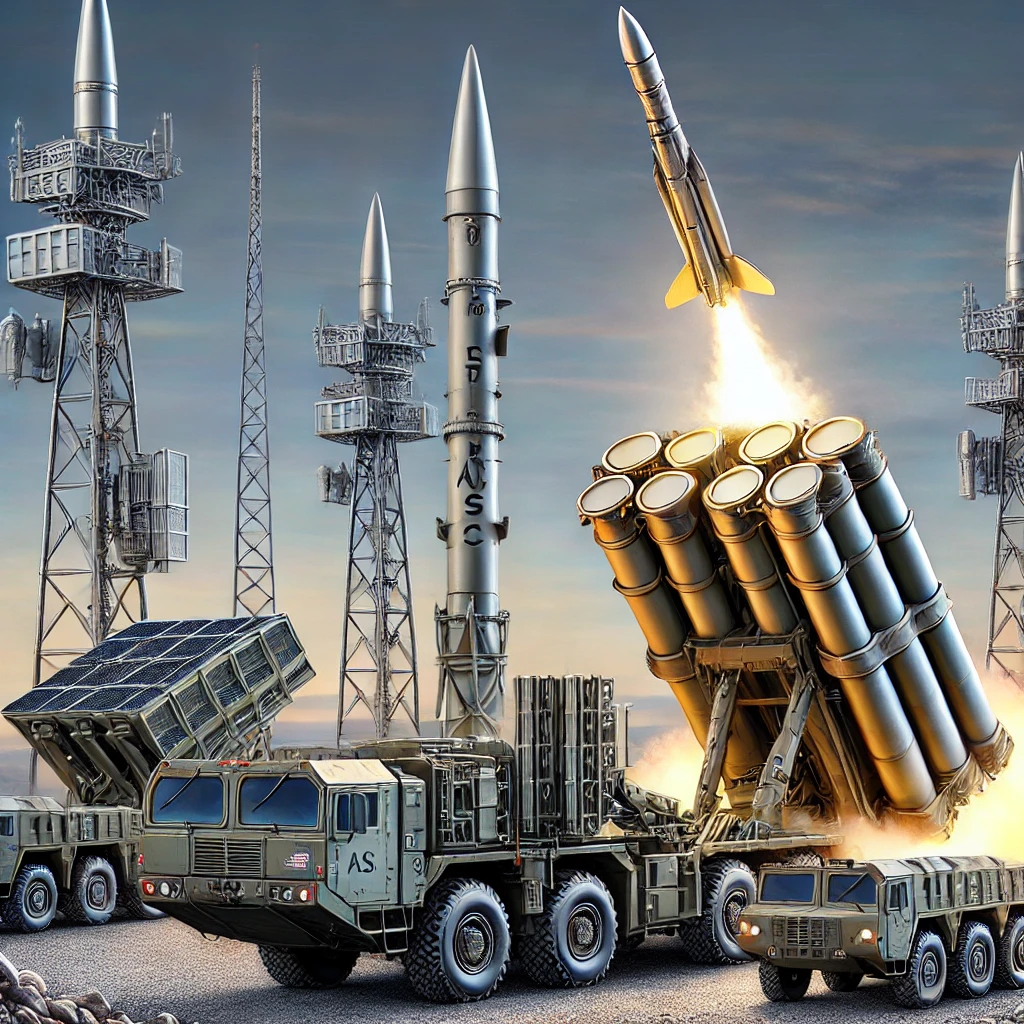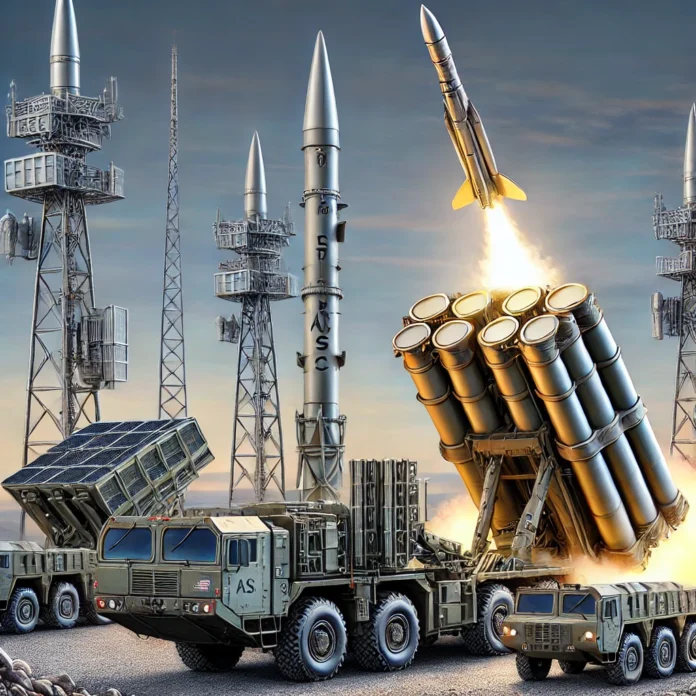The S-400 and S-500 missile defense systems are two of the most advanced air defense platforms developed by Russia, designed to counter a wide range of aerial threats, from aircraft to ballistic missiles. Below, we analyze the main advantages of these systems, compare them with their global competitors, and discuss their weaknesses.

Main Advantages:
- Multi-Layered Defense Capability: The S-400 is designed to engage a wide variety of targets, including aircraft, UAVs, cruise missiles, and ballistic missiles. It can operate at multiple layers, providing comprehensive air defense over large areas.
- Long Range: The S-400 boasts an impressive range of up to 400 kilometers (about 250 miles) with its longest-range missiles (40N6), making it capable of targeting high-altitude and long-range threats far beyond the reach of many competing systems.
- Simultaneous Target Engagement: The system can track and engage up to 80 targets simultaneously, with multiple missiles launched at different targets, providing a high degree of battlefield efficiency.
- Flexibility in Missile Types: The S-400 can fire several different types of missiles, each optimized for different kinds of targets and ranges, including short, medium, and long-range missiles. This makes it a versatile system capable of adapting to various threat environments.
- Anti-Stealth Capabilities: The S-400 is reportedly designed to counter stealth technology used by advanced fighters like the F-22 Raptor and F-35 Lightning II. Its radars are claimed to be able to detect low-observable targets at significant distances.
- Deployment Versatility: The S-400 can be quickly deployed and re-deployed, providing flexibility in various combat scenarios. This mobility makes it suitable for protecting critical infrastructure and military assets that may be on the move.
Main Competitors:
Patriot PAC-3 (USA): The Patriot system is a long-standing competitor to the S-400, especially with its PAC-3 upgrade, which focuses on ballistic missile defense. The Patriot has seen extensive combat use and is known for its reliability, but it lacks the same range as the S-400.
THAAD (USA): The Terminal High Altitude Area Defense (THAAD) system is highly specialized in intercepting ballistic missiles at high altitudes. While it is complementary to the Patriot, THAAD does not have the multi-role versatility of the S-400.
Aster 30 SAMP/T (Europe): Developed by France and Italy, this system is another European competitor with advanced missile defense capabilities. However, it has a shorter range compared to the S-400.
HQ-9 (China): China’s HQ-9 surface-to-air missile system is often considered a close competitor to the S-400. While it shares similarities with the Russian system, such as multi-layered defense and anti-stealth capabilities, it is often seen as less advanced overall.

S-500 “Prometey” Missile Defense System
Main Advantages:
- Extended Range and Altitude: The S-500 is a next-generation system with an extended range of up to 600 kilometers (about 373 miles) and the ability to engage targets at altitudes of up to 200 kilometers (about 124 miles), which includes the ability to intercept intercontinental ballistic missiles (ICBMs) and low-earth-orbit (LEO) satellites.
- Hypersonic Target Interception: One of the key advantages of the S-500 is its ability to intercept hypersonic missiles, which are increasingly seen as a future threat due to their high speeds and maneuverability. The S-500 is designed to neutralize these types of threats.
- Integrated Defense: The S-500 is designed to work alongside the S-400 and other Russian defense systems, providing a layered and integrated defense network that can cover a wide range of threats from various altitudes and ranges.
- Enhanced Radar and Detection Capabilities: The S-500 comes with advanced radar systems that have improved detection capabilities over the S-400, making it more effective at identifying and tracking stealth aircraft, hypersonic vehicles, and space-based threats.
- Strategic Defense Role: The S-500 is expected to play a crucial role in Russia’s strategic missile defense shield, acting as a high-altitude interceptor that can protect against nuclear threats.
Main Competitors:
- THAAD (USA): THAAD is the closest current competitor in terms of its high-altitude interception capabilities, but the S-500 is designed to offer even greater range and multi-role functionality.
- Aegis Ballistic Missile Defense (USA): The U.S. Navy’s Aegis system, especially when equipped with the SM-3 interceptors, provides a formidable defense against ballistic missiles and can operate both at sea and on land (Aegis Ashore). The S-500’s potential capability to target satellites and hypersonic missiles, however, may give it an edge in certain scenarios.
- HQ-19 (China): China’s HQ-19 is under development and is expected to offer similar capabilities to the S-500 in terms of intercepting ballistic missiles and potentially hypersonic targets.
Main Weaknesses:
- Unproven in Combat: Unlike systems like the Patriot or THAAD, which have seen extensive use in real-world combat scenarios, the S-500 has yet to be tested in actual warfare. Its true effectiveness against hypersonic missiles and ICBMs remains theoretical until it is deployed in live conditions.
- High Cost: The S-500 is expected to be significantly more expensive than the S-400 and other air defense systems, limiting its accessibility to many countries. This could restrict its deployment to only a few well-funded nations or regions.
- Deployment Complexity: The S-500’s advanced capabilities come with increased operational complexity, requiring specialized training and maintenance, which could limit its effectiveness if deployed in areas without strong logistical support.
- Development Delays: The S-500 has faced several delays in its development and deployment timeline. Any further delays could slow its introduction into Russia’s defense network and reduce its competitive edge on the global market.
Conclusion
The Russian S-400 and S-500 missile defense systems represent some of the most advanced air and missile defense technologies available today, offering unique advantages in range, multi-role capabilities, and strategic defense. However, they also face significant challenges, including vulnerabilities to electronic warfare, operational complexity, and political obstacles on the global market.
The S-400 competes with systems like the U.S. Patriot and THAAD, while the S-500 looks to take on more strategic roles against threats like hypersonic missiles and ICBMs. Despite their strengths, both systems’ effectiveness will ultimately depend on real-world deployment and how they adapt to emerging global threats.




